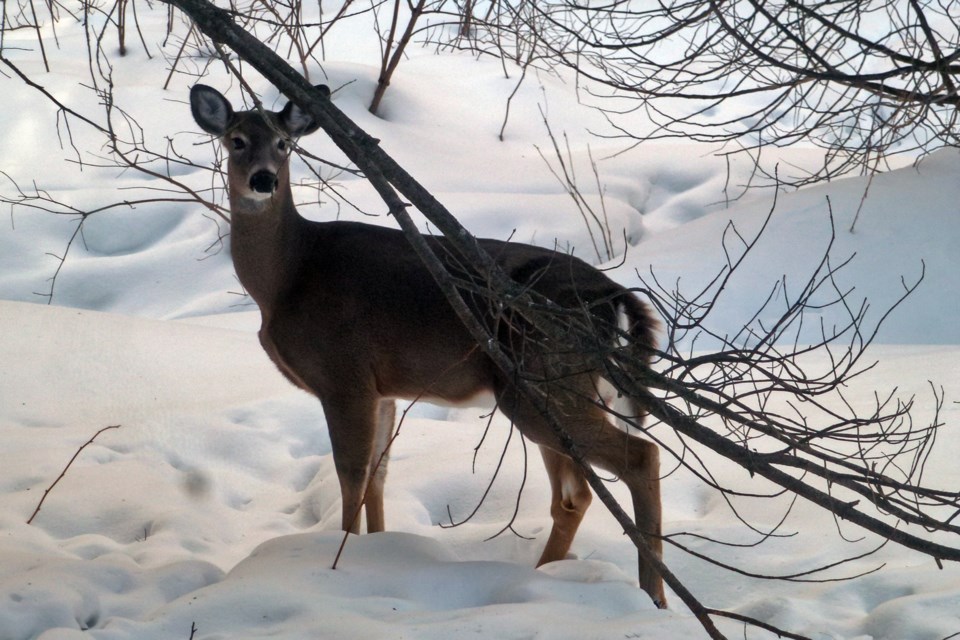With the melting of the winter’s snow comes an important time in the life of a white-tailed deer ... social distancing! For the last four months all the deer in the area have been clustered together in a deer yard, and now it’s time for spring break!
Last October the deer had begun to gather in small groups as the bucks tried to simultaneously impress the does while intimidating the smaller bucks (yeah, just like high school prom.)
The mating season for the deer lasted for about a month until everyone lost interest in each other. But then it got really cold and it began to snow.
So each small group started to follow trails that only a seasoned deer would know about, and these trails led them to sheltered areas where hemlock or cedar trees provided cover from wind and predators.
It’s always a challenge for them to survive the harsh cold of winter, but it seems that they have been fairly successful at it over the past few centuries.
The winter deer yards are quite traditional, in that the sites are mapped by biologists and can be used as census areas as the deer will return to these sheltered valleys every winter.
The thick branches of cedar or the deep forest of hemlock provide that all-important windbreak as well as being a food source.
The deer eat only the new growing tips of hemlock and maple… not the whole twig, only the tender buds.
The stomach of a deer is about the size of a basketball, and if I sent you out with pruning shears and an empty basketball-sized container you would be most of the day trying to fill it. This is how deer pass the time each day… nibbling, constantly.
And there is plenty of competition for those new buds as a deer yard many have dozens or even hundreds of deer yarded together.
As the cold days slowly go by, the does are creating about-to-be-born fawns inside them. So they are actually eating for two all winter. By the time the springtime warmth of late March or April arrives, these deer have had it up here with each other!
And so they readily partake in some serious social distancing.
As the does seek solitude in preparation for the fawns’ arrivals, they must find an area that no other deer has yet found, and it has to have enough cover and food to ensure the survival of the two of them.
Occasionally a youngster, now a yearling, will continue to follow mama around the neighbourhood, but a few well placed kicks to their heads from mama usually gets the message across to “go isolate yourself somewhere else!”
The fawns will arrive just as the white trilliums begin to blossom.
Under a normal springtime I’d give the warning to be aware when driving county roads at night as the deer will be on the move, heading to their favourite quiet corner of the county.
However, this year with all of us humans already self-isolating and staying holed up in our dens, car traffic should be light and deer-vehicle encounters should be much reduced.
But be assured that Nature is carrying on. Frogs are calling, birds are migrating home and the deer are moving. Spring has broken wide open just like in the good ol’ days.
